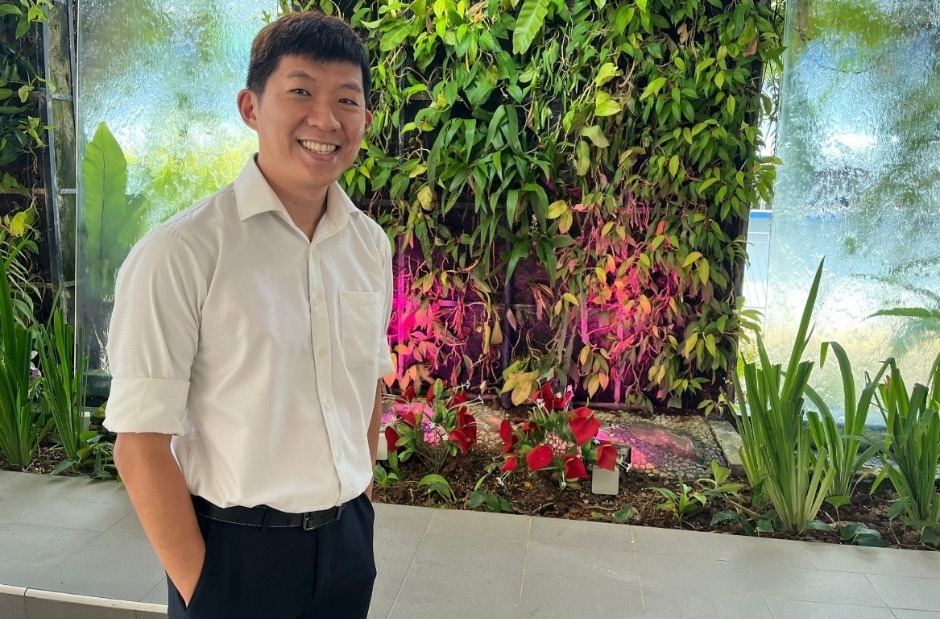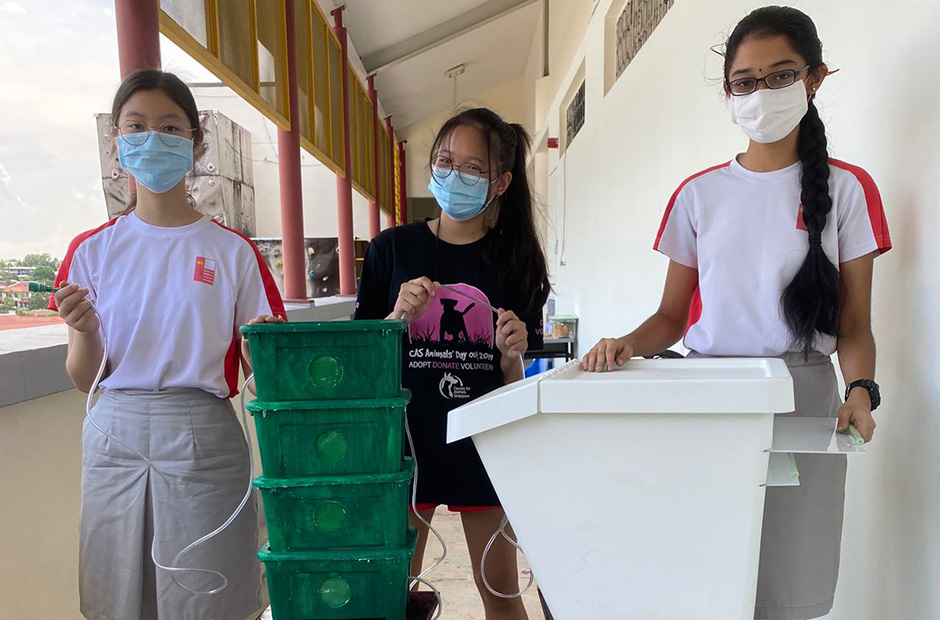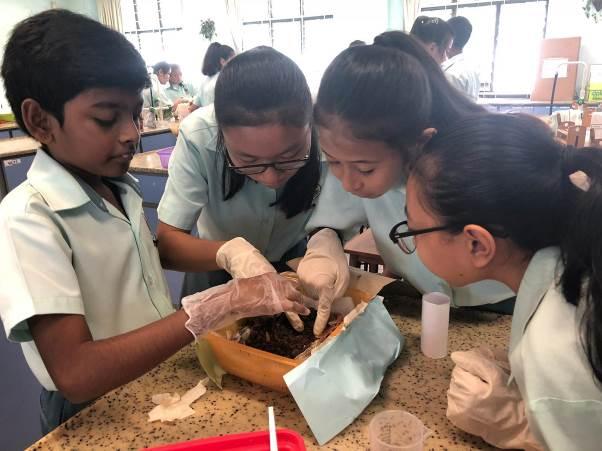“When I was about 10 years old, my grandfather and I would spend hours watching animal documentaries together,” says Mr Kuah, who shares how he began to understand that in order to protect and preserve animals, he had to first take care of the environment. “My greatest aspiration is to see a world in which humans and animals can coexist in harmony.”
A man of mindful consumption, Mr Kuah is not taken in by the alluring tactics of online retailers who offer time-limited sales to tempt shoppers into buying more than they need. Rather, he asks himself whether he truly needs the item before making a purchase.
Mr Kuah also employs creative methods to upcycle items that would otherwise be thrown away. For items that cannot be refused (saying ‘no’ to free stuff that becomes instant waste), reduced or reused, he turns to recycling, depositing them into the blue recycling bins found in his HDB estate.
To dispose of e-waste and textiles, he makes his way to City Square Mall, where the ALBA E-Waste 3-in-1 Bin and Greensquare Textile Recycling bin offer sustainable solutions.
These efforts are just the tip of the iceberg for the activities he engages in as part of his passion for the environment.
Turning trash into learning opportunities through his CCA

From headlines to decorative containers for miscellaneous items: Students learn how to turn old newspapers into bowls with Mr Kuah’s upcycling tutorials on YouTube.
As the teacher-in-charge of the school’s Green Club Co-Curricular Activity (CCA), Mr Kuah guides his students in the art of upcycling, a concept that was first introduced to him by a fellow teacher. “I had no idea what it was at the time,” he recalls, “But after attempting to make my first upcycle product using newspaper, I was hooked.” When asked about his most cherished creation, he proudly cites the first upcycled item he made — his newspaper bowl.
The process of creating a newspaper bowl involves rolling newspapers into thin sticks, which are then joined and flattened to form a circle before being pushed out to take the shape of a bowl. To ensure its durability, a layer of white glue is applied as the final step in the process.
Mr Kuah started chronicling his upcycling methods on video in the aftermath of the second lockdown of the COVID-19 pandemic in June of 2021. He proceeded to set up his own channel on YouTube and uploaded his videos showcasing his creations.
His instructional videos meticulously detail each step of the transformative process. His most popular video — a basket fashioned out of used beverage cartons — has gained an impressive 16,000 views.
When CCAs were shifted online, students were able to peruse and pick their preferred upcycling tutorial. “It became increasingly difficult for me to teach my Green Club students about upcycling, so the videos helped a lot.”
The allure of Mr Kuah’s upcycling practice caught on as several of his Green Club students have embraced it as a personal pastime. “They share their creations with me, and I try to refine their subsequent endeavours with constructive feedback,” he divulges, having accrued a certain measure of proficiency in his craft.
Spreading the zeal to tackle climate change
According to him, the students seem to find his zeal for environmentalism somewhat endearing, remarking with amusement that they perceive him to be this “offbeat” pedagogue who can’t cease harping on about saving the planet.
There are the news updates and reports he shares regularly on the state of the planet’s climate with his students, all the while spurring them to adopt more ecologically sustainable behaviours.
These discussions on how environmental issues are inexorably intertwined with various fields of study will develop analytical skills in them, he feels.
“Students will get a better perspective of real-world issues and explore the difficulty and challenges that one will face solving such issues.” It is also his hope that through this wider lens, his students will become empathetic towards others who live in different parts of the world who are suffering due to the effects of climate change.
Teacher by day, animal rescuer by heart

Mr Kuah lends a helping hand (with gloves, of course) to furry friends like this colugo.
During the weekends and school holidays, Mr Kuah metamorphoses into a veritable hero of a different stripe: that of an animal rescuer.
Ten years ago, when a colleague extended an invitation to volunteer with the Animal Concerns Research and Education Society (ACRES), Mr Kuah accepted gladly, and they attended the wildlife rescue training programme together. “Initially, I was hesitant about handling animals, fearful of causing harm during the rescue process. However, as time went by, my experience grew,” he says. Mr Kuah has since rescued various animals, including birds, reptiles, and mammals like the crested goshawk, spotted wood owl, paradise tree snake, reticulated python, civet, and colugo.
But his most memorable rescue was a Sunda pangolin, the most trafficked mammal in the world due to high demand for their scales and claws in traditional medicine.
“I got the call during the day, which is rare considering pangolins are shy, elusive and nocturnal creatures,” he explains. “I suspect it was walking around, ventured into a small drain, and got stuck,” says Mr Kuah.
His rescue efforts do not stop after his shift with ACRES ends. He has rescued a few bats within school grounds these past years. “When bats accidentally land on the ground they do not have the strength to fly off like birds do,” he shares, “So they require additional help to put them on the bark of a tree so that they can fly off at night.”
What about a bug in the classroom? First, Mr Kuah covers his ears until the students stop screaming, he then gently picks up the insect and releases it outside. If he happens to know the species, he will share fun facts about it with his students.
Future plans to secure a sustainable future
Mr Kuah hopes to take his students on an overseas field trip to Sweden one day – not for Maths but for the sustainability cause. “The country invests heavily on the usage of reusable energy such as wind, bioenergy, solar, hydropower and many more,” he says.
Back on home turf, he is looking to organise an annual upcycling competition so that all schools in Singapore will have the opportunity to learn more about upcycling. To get the ball rolling, he intends to share his upcycling videos with as many schools as possible so that the students can benefit from it.
“As Singapore evolves into a ‘City in Nature’, a key aspect of the 2030 Green Plan, I believe that everyone can do their part to ensure that this vision becomes a reality.”






